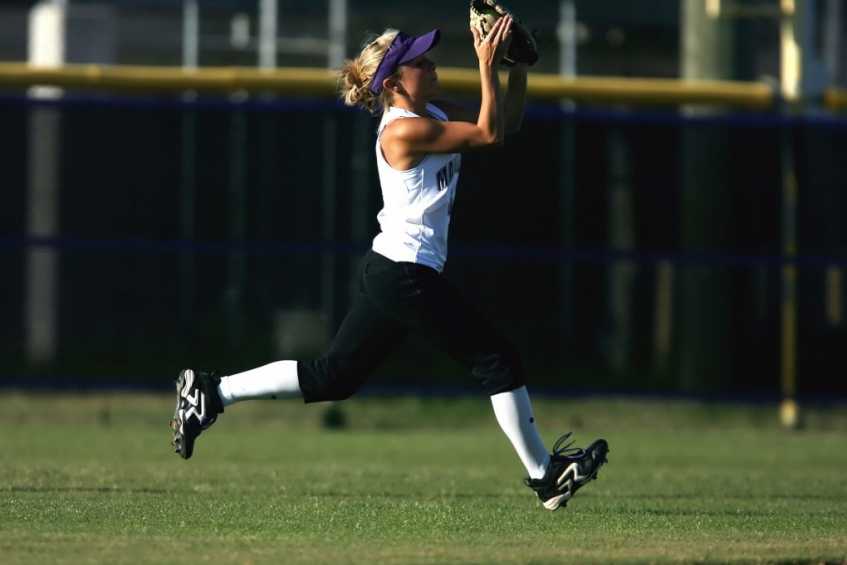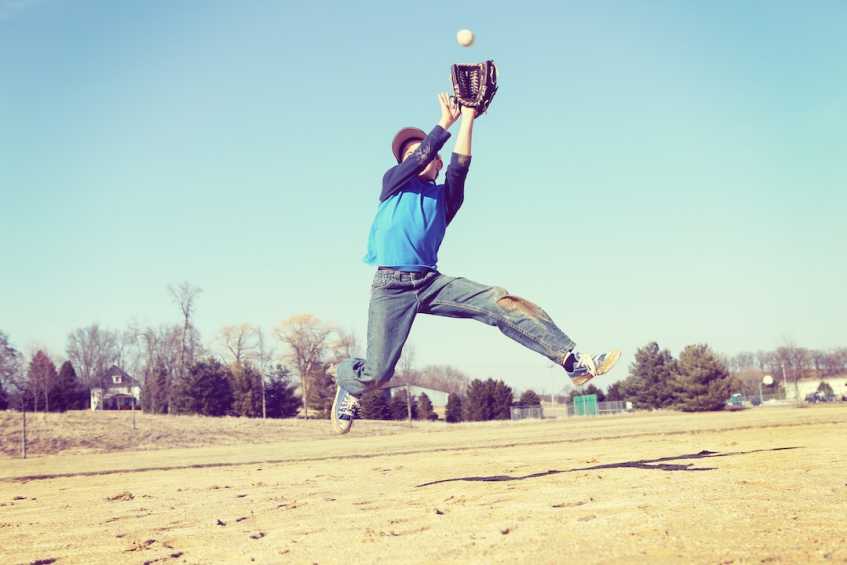

When I think of my younger days of playing baseball, years 5 to 12 years old, two memories come to me. Both have to do with how to catch a baseball. The first is having a baseball catch with my dad. I remember it being just like Kevin Costner at the end of the movie, Field of Dreams. (Check out our full list of the Best Baseball Movies for Kids for a better option for younger fans.) Playing ball with dad is a priceless memory that had a lot to do with developing my skills and with falling in love with the game. Some 60 years later I am still throwing a ball and having a catch with my baseball and softball students. My second memory was one of beating the drum in my house, providing no rest for my family members. That is not true because I had no musical talent or desire to pound the drums. It was similar though. I wasn't beating the drum but throwing a baseball off the wall in my basement. Hours upon hours when I couldn't be outside playing ball due to the weather, I would be bouncing and throwing balls off the basement walls. I did that even throughout my high school, college and early pro years, too. Thank God for an unfinished basement and an understanding family. I'm not sure what I would have done without that basement baseball game of catch. Without a wall to throw a ball off, I am not sure I would have made the major leagues. Because of that practice and skill development, I inform youth how vital a wall can be for them learning how to catch a baseball correctly. Yes, wall ball is crucial for their baseball development, especially when other kids or parents are not available to play some baseball catch with them. One of the first things I tell my students is "Find a wall," if you are serious about the game and learning how to catch a baseball. It is one of the best ways to learn to catch and to develop quick, soft hands. Of course, it is not always easy finding a wall to work, especially in the winter time and when players have a finished basement. Kids may be able to use their school gymnasium to practice when no other place exists. Some indoor baseball academies may provide a wall and space to practice these drills, too. When they cannot find something sufficient, kids can use an extremely light ball to practice with, one that could do no damage to any wall. Anything that helps develop their hand-eye skills will be beneficial down the line, whether it is done with a glove or without one.

The best part of wall ball catch is the high number of repetitions that can come in a short amount of time. As seen in this video, I was able to make 17 catches in 24 seconds. Doing the math, just five minutes of practice on the wall can provide great advancement. For kids in cold weather states, having a barrier to bounce balls off of can make all the difference for learning to catch a baseball. These wall ball drills may appear easy, but for inexperienced players, much practice flipping balls in a consistent manner and catching them is necessary. The best news is that one only needs to practice a few minutes each day for many more repetitions than playing catch with a partner outside. In no time, players improve and enjoy wall flips. Wall ball is suitable for players of all ages and is a practice I continued in many big-league stadiums throughout my big league years. For youth, it is also a great way to teach a young fielder to catch a ball without the fear factor that exists when playing catch with a friend or with mom or dad. Using a softer ball like a tennis ball also allows players to use the garage or basement wall. When parents are around it is a good idea to stand behind players and help them retrieve missed balls because chasing missed balls are what gets tedious for kids.
As seen in this video, it is good to begin with no glove and a tennis ball. A tennis ball, being smaller and lighter, will not hurt and helps kids, who usually have little hands. Moving to a regulation size softer ball or a regulation hardball is the next step. Once they become adept at catching with no glove, they will find catching with a glove quite easy. What is important when receiving balls off the wall, as when playing catch correctly, is to have the hands out away from the body with the catching elbow out to the side. A slight give of the hands as the ball reaches the glove is crucial to creating the necessary soft hands. Until players consistently learn how to catch a baseball correctly with one hand with the elbow out to the side, they should not add the second hand. When adding the two-hand catch idea too soon, young players often bring their elbows in, which is not the correct catching technique. Notice with two-hand catch the throwing hand is out front and slightly under the glove and not behind it or to the side of the glove, an often-made mistake by players. Also, notice how the glove delivers the ball to the bare hand with a quick downward movement of the wrist. Fielding ground balls off the wall is done with hands out front and with the throwing hand now slightly above the glove. As players get more proficient with catching and flipping balls during wall ball catch, they should work on different speed flips and the transfer of the ball from glove to hand quicker. Two of my most often used statements to young players are "I would rather see you boot the ball in practice trying to be quick than make the play doing it slowly," and "If you are not dropping balls occasionally, you are probably not working fast enough." It is hard to notice but essential to teach young players to go into the glove with just two fingers in a throwing grip position, so they don't come out with a palm ball. Getting the ball back to the throwing side hip as quickly as possible is crucial for a quick release.
In future videos, I will show other uses for the wall as well as adding footwork to these catching and fielding drills.
@howtocatchabaseball @catchingtheball #basballcatch #baseballcoaching #jackperconte #fieldingabaseball #baseballfieldingdrills #defensivebaseball #baseballskills #howtoplaybaseball Jack Perconte has dedicated his post-major league baseball career to helping youth. He has taught baseball and softball for the past 27 years.His playing, coaching and parenting storiescreate betterexperiences forathletes andparents.Jack has writtenover a thousand articles on coaching baseball and youth sports.Jack is the author of "The Making of a Hitter" and "Raising an Athlete." His third book "Creating a Season to Remember" is in the works. Jack is a featured writer for Baseball the Magazine. You can also findJack Perconte on YouTube withover 80 fun and innovative baseball instructional videos.

After playing major league baseball, Jack Perconte has taught baseball and softball since 1988 and offered valuable coaching training too. He has helped numerous youth players reach their potential, as well as having helped parents and coaches navigate their way through the challenging world of youth sports. Jack is one of the leading authorities in the areas of youth baseball training and coaching training advice.
All Jack Perconte articles are used with copyright permission.There are 0 comments on "How to Catch a Baseball - Wall Ball"
chandler allen says:
"Hi my name is chandler, i’ve enjoyed..."
On Wanting to tryout for summer ball. as an 18 year old
david graham says:
"With no current MLB team in Canada,..."
On With no current MLB team in
Charles Chavez says:
"To All Coaches: Do you have13U or..."
On Looking for Games